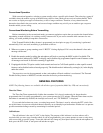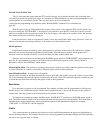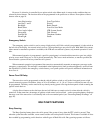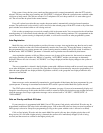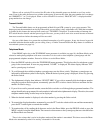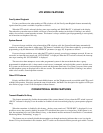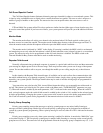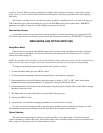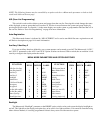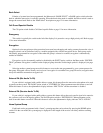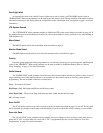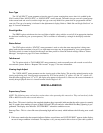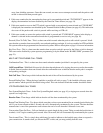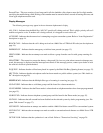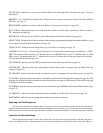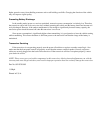away from shielding structures. Once this tone sounds, no more access attempts are made until the push-to-talk
switch is released and then pressed again.
• If this tone sounds after the transmitter has been on for an extended period and “TX TIMEOUT” appears in the
display, the transmitter has been disabled by the Time-Out Timer feature (see page 14).
• If this tone sounds as soon as the PTT switch is pressed with a conventional system selected and “TX DIS BSY”
is displayed, the transmitter was disabled by the Transmit Disable On Busy feature (see page 16). This indication
also occurs if the push-to-talk switch is pressed while receiving an LTR call.
• If this tone sounds as soon as the push-to-talk switch is pressed and “TX DISABLE” appears in the display, a
channel is selected in the conventional mode that is programmed as receive-only (see page 18).
Proceed (Clear-To-Talk) Tone - This is a short tone which sounds when the push-to-talk switch is pressed. It indi-
cates that the system has been successfully accessed and speaking can begin. It is always enabled on LTR and Multi-
Net systems and can be programmed on conventional systems. Refer to description on page 14 for more information.
Key Press Tone - This is a short tone that sounds when an option switch is pressed or the Select switch is changed.
This tone can be disabled by system operator programming or by the Menu mode “RADIO SNDS” parameter (see
page 21).
MULTI-NET TELEPHONE CALL TONES
Confirmation Tone - This is a short tone that sounds when the number just dialed is accepted by the system.
Call Proceed Tone - With Multi-Net special calls other than telephone calls, ringing does not occur after the number
is dialed. Instead, another short tone sounds after the confirmation tone to indicate that the audio path is complete
and speaking can begin.
End Call Tone - Three beeps which indicate that the end of the call has been detected by the system.
Proceed Dialing Tone - When placing a landside- to-mobile call (refer to page 7), the landside caller may enter a
special number which specifies the mobile being called. This tone indicates when that number should be dialed.
LTR TELEPHONE CALL TONES
Free System Ringback Tones - In the Free System Ringback mode (see page 16), a ringing tone sounds when the
system is no longer busy.
Reorder Tone - Three beeps which indicate that the call has been terminated by the system.
Return Time Warning Tone - Two beeps which warn that you have not transmitted for an extended period during the
call. If you do not transmit within 5 seconds, the call is automatically terminated by the system. The time between
transmissions is one of the parameters used to detect the end of a call when the # character is not sent.
Conversation Time-Out Tone - Calls are limited to a certain length by the system. Thirty seconds before this time is
reached, a “tick” begins sounding each second. After 30 seconds, the call is automatically terminated by the system.
Turn-Around Tone - This is a single beep which may be used to indicate to the landside party when to respond to
your transmission. It sounds when you release the PTT switch, and you may partially hear this tone.



